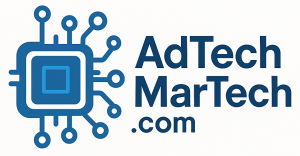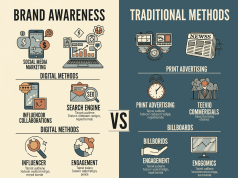In today’s fast-paced digital landscape, advertising has become both ubiquitous and crucial for brands aiming to capture consumer attention. However, as advertising saturation reaches unprecedented levels, the phenomenon of ad fatigue looms large. This occurs when consumers become desensitized to excessive or repetitive advertising, leading to disengagement and diminished brand loyalty. To navigate this challenge, brands must adopt innovative strategies to maintain consumer interest without overwhelming them. Here’s how they can achieve that.
Understanding Ad Fatigue
Ad fatigue manifests when consumers start ignoring ads, feel annoyed by them, or actively resist their messaging. This phenomenon is particularly pronounced in a landscape flooded with promotional content across various platforms, from social media feeds to email inboxes. There are several signs that a brand may be suffering from ad fatigue:
Diminishing Click-Through Rates (CTR): A noticeable decline in CTRs indicates that the audience is growing tired of the current message.
Increased Unsubscribes and Opt-Out Rates: A spike in users opting out of communications is a clear signal that they find the content overwhelming or uninteresting.
- Higher Cost Per Acquisition (CPA): An increasing CPA suggests that consumers are becoming less responsive to ads, prompting brands to spend more to achieve the same results.
Understanding these signs is vital for brands to intervene before losing touch with their audience.
Strategies to Combat Ad Fatigue
1. Diversify Content Strategies
Content Variety: Rotate between different types of content (videos, images, infographics, and interactive formats) to keep the consumer experience fresh. Engaging content encourages more interaction and can mitigate the effects of fatigue.
User-Generated Content: Encourage customers to share their experiences with the brand. This enhances authenticity and provides fresh content, which can engage consumers in a new way.
2. Personalization
Using data analytics, brands can create tailored experiences for their customers. Personalization involves delivering relevant content based on user preferences, behaviors, and past interactions. This strategy enhances user engagement and reduces the feeling of being bombarded by generic ads.
3. Optimize Ad Frequency
Finding the right balance in ad frequency is critical. Brands should monitor consumer engagement metrics closely to determine optimal touchpoints. A/B testing various frequencies can provide insights into when users start experiencing fatigue. Tools that automate frequency capping can help prevent oversaturation.
4. Leverage Retargeting Wisely
Retargeting can be incredibly effective but must be used judiciously. Brands should aim to present different messages in retargeting campaigns rather than bombarding users with the same ad. For example, highlighting new features, inviting users to explore additional product benefits, or showcasing customer testimonials can refresh the narrative.
5. Use Contextual Advertising
Instead of placing ads wherever there’s space, brands can focus on context-driven placements that enhance relevancy. By aligning advertisements with specific consumer interests and moments, brands can create a more meaningful connection, reducing the likelihood of fatigue.
6. Focus on Value-Driven Content
Creating content that emphasizes value—whether it’s educational, entertaining, or inspirational—can foster deeper connections with consumers. Brands should aim to provide benefits that go beyond mere sales pitches, positioning themselves as valuable resources within consumers’ lives.
7. Periodic Breaks
Sometimes, stepping back can rejuvenate a brand’s presence. Considering a strategic pause or reducing ad activity temporarily can replenish consumer interest. This break offers consumers time to digest past messaging and increases excitement when the brand re-enters the market.
Conclusion
Ad fatigue is a significant challenge for brands in a world overflowing with promotional content. By leveraging diverse and engaging strategies, exploring personalization, optimizing frequencies, and focusing on contextual relevance, businesses can effectively keep consumers engaged without risking oversaturation. In the ever-evolving landscape of consumer behavior, brands that prioritize meaningful connections and foster authentic engagement will not only mitigate the effects of ad fatigue but also cultivate lasting loyalty among their audience.









